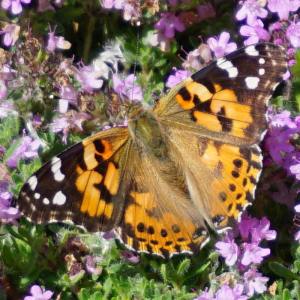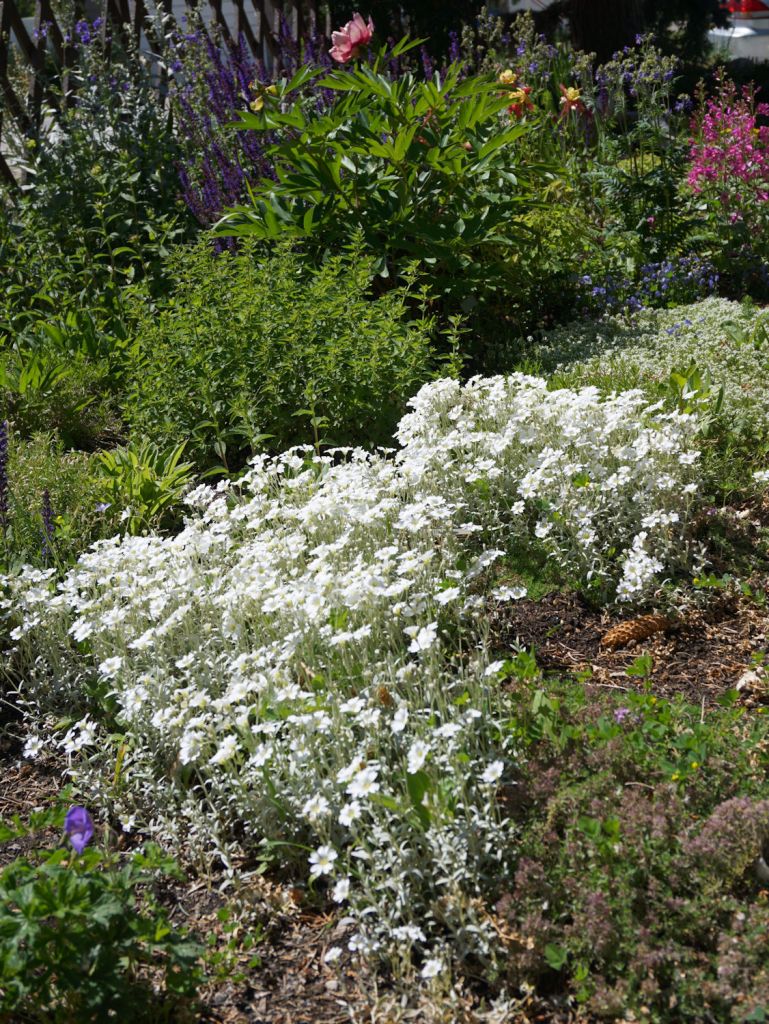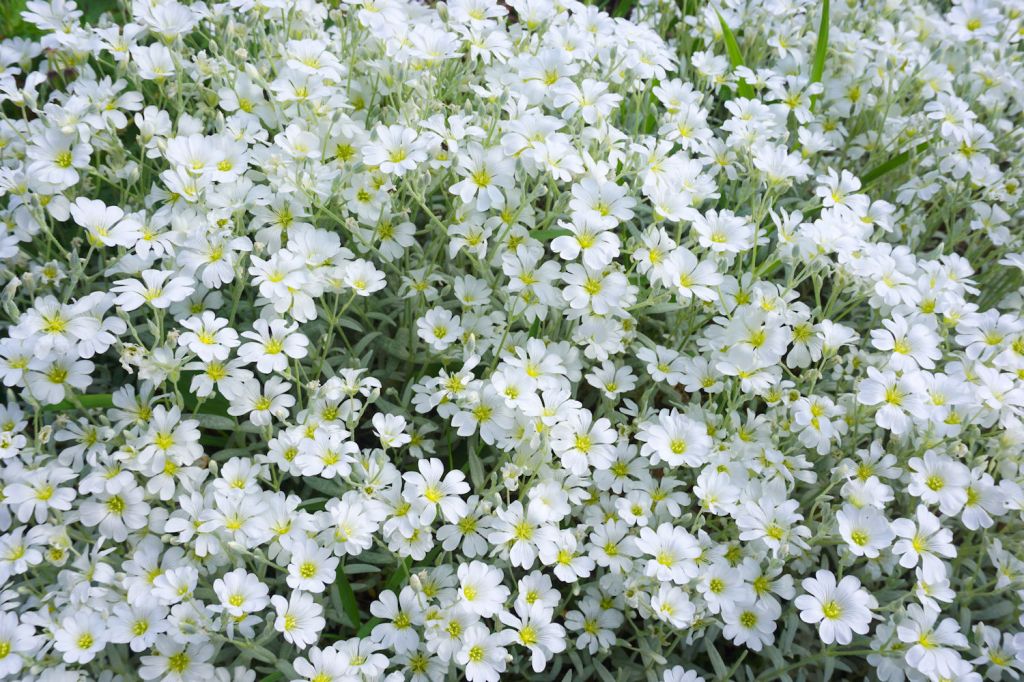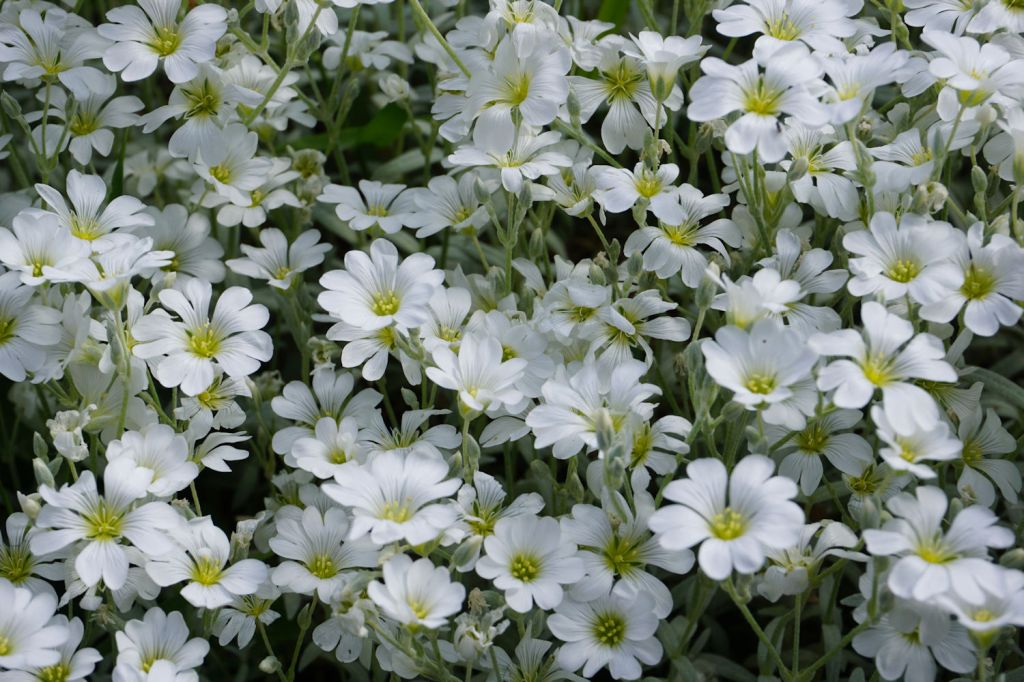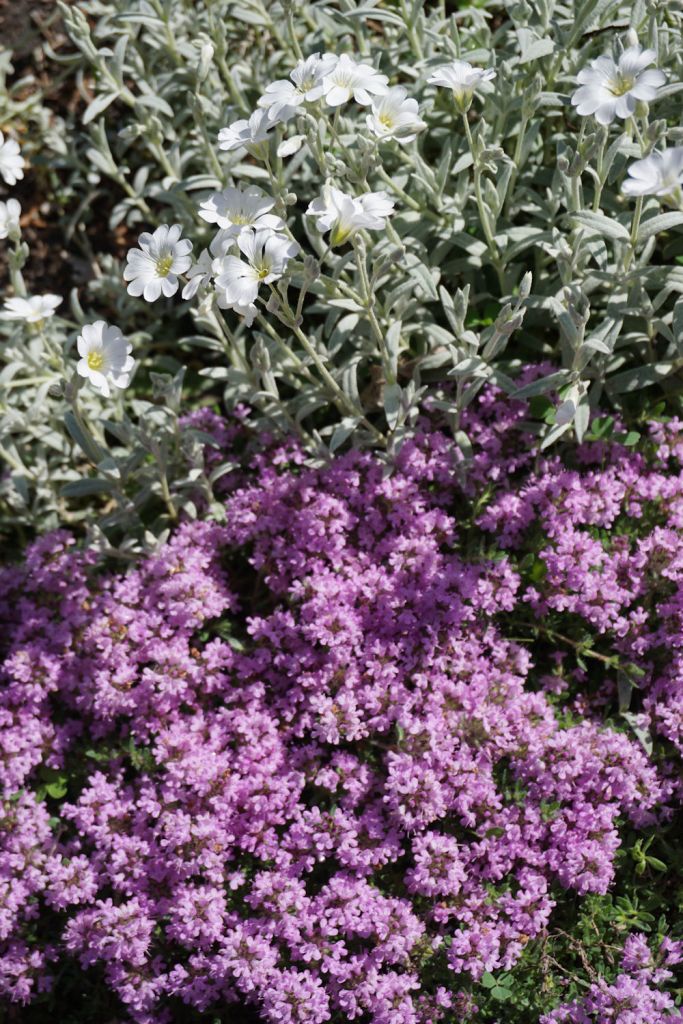Viola adunca Early blue violet
May 19, 2023
Calgary garden in May
May 5, 2023
It is taking longer for some perennials to blossom this spring. Those marked with an asterisk have blossoms in the Parkdale Community Garden YYC. Note that the dates on photos do not correspond with current 2023 gardening season.
- Viola adunca Early Blue Violet
- Scilla siberica Siberian squill*
- Pulsatilla Prairie Crocus*
- Muscari armeniacum Grape Hyacinth
- Primula denticulata Drumstick Primula*
- Tulipa Tarda
What’s almost blooming
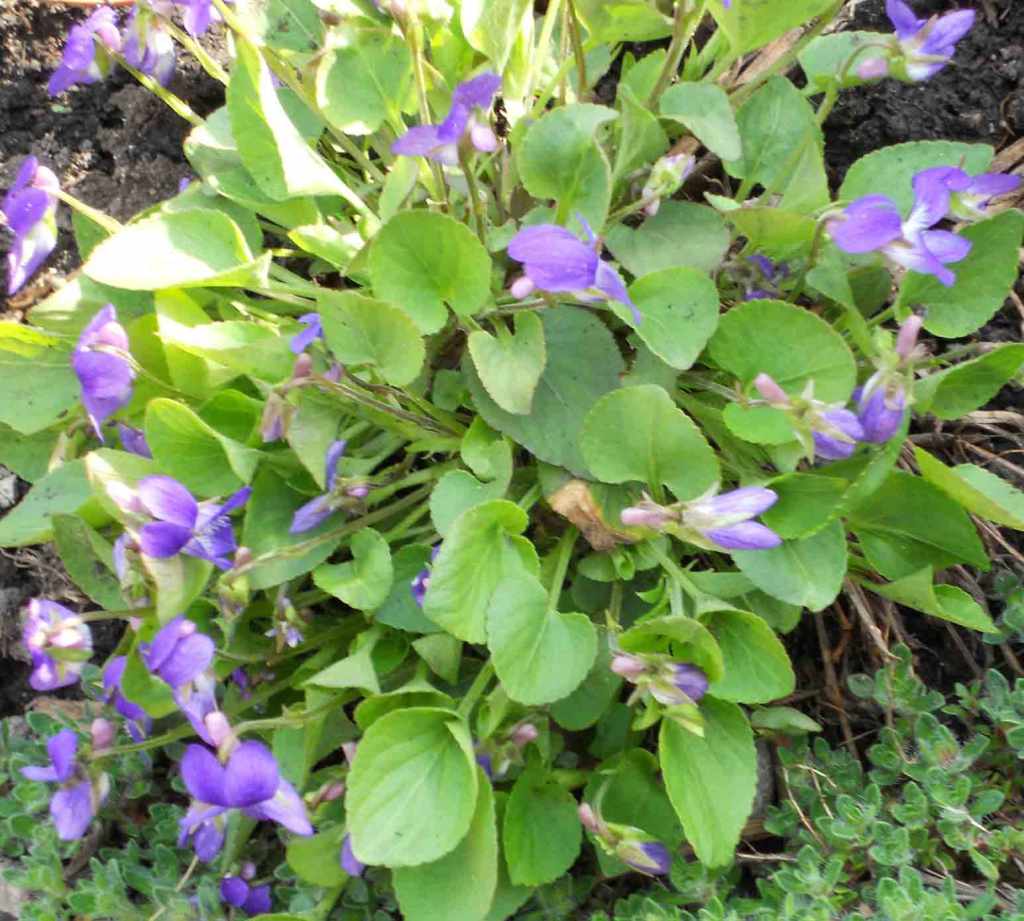
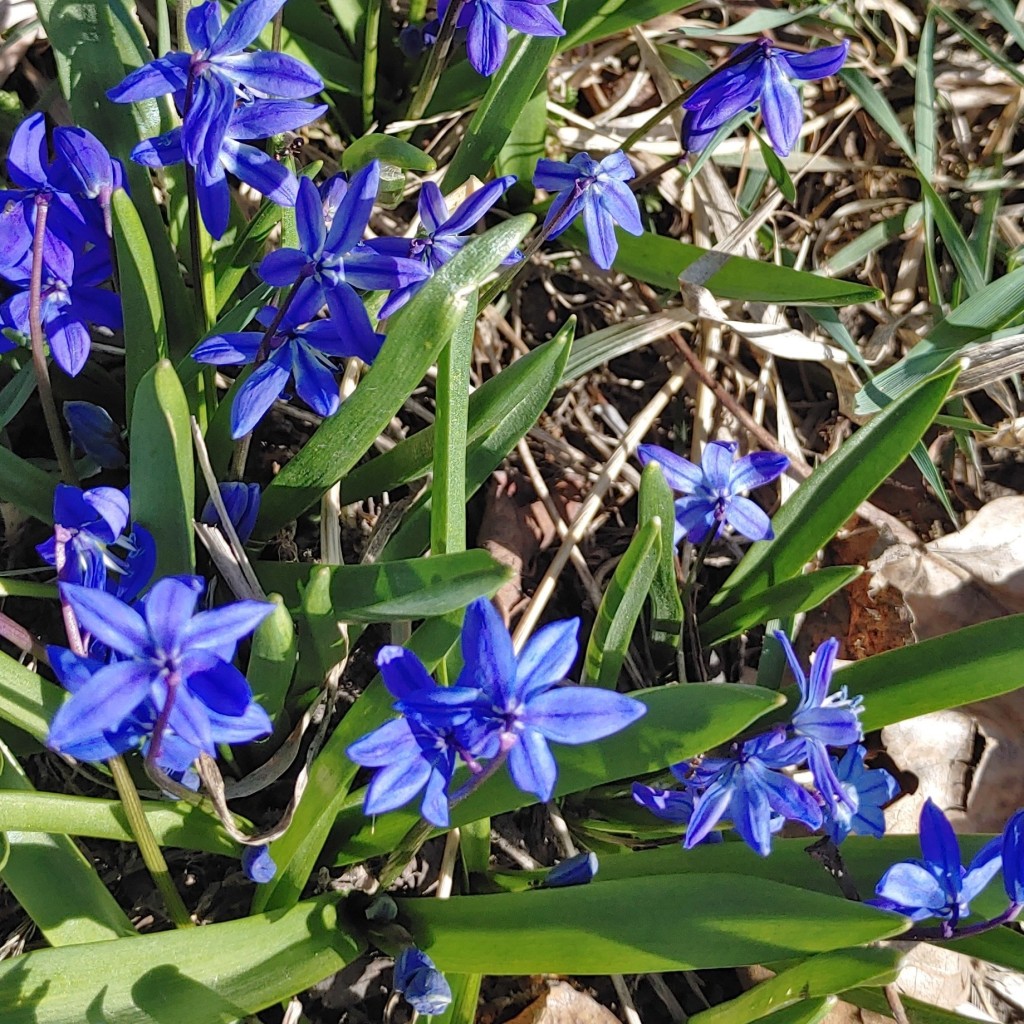
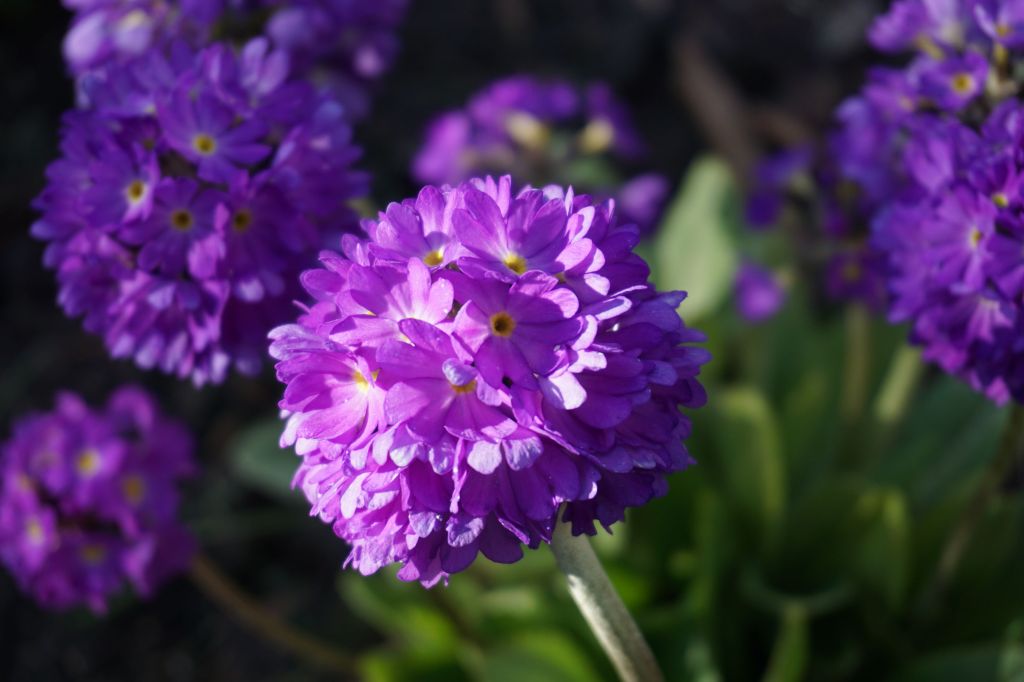
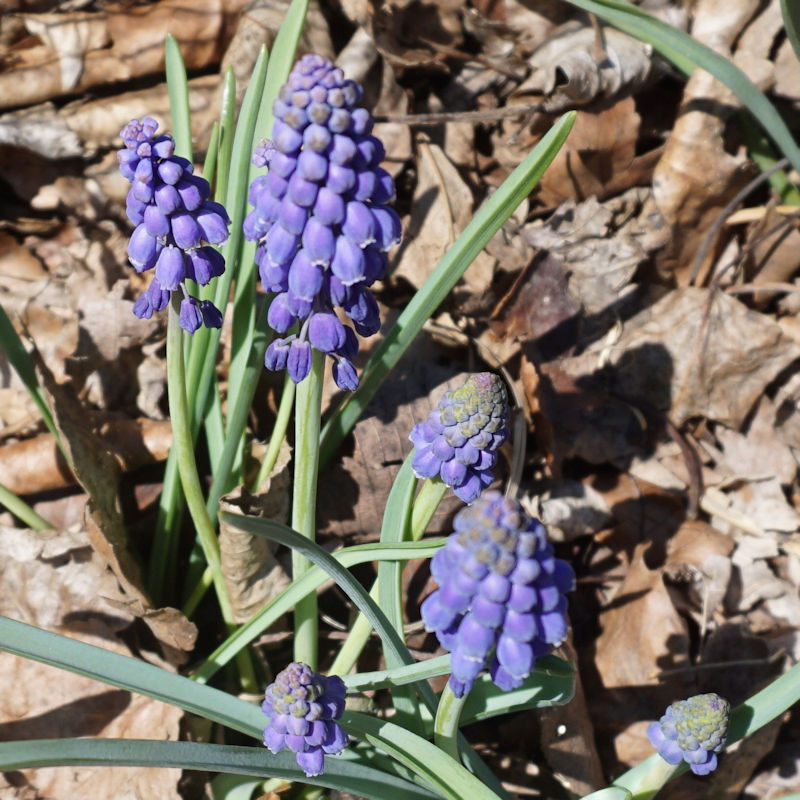




Philadelphus Mock Orange
August 14, 2021
A 29 June 2012 Calgary Herald article by Carole Dobson suggested that Calgary gardeners consider planting Philadelphus Mock Orange, instead of its much less hardy cousin but very popular, Hydrangea. Dobson recommended Philadelphus lewisii ‘Waterton’ which is native Alberta’s Waterton Lake region.
The Mock Orange rounded deciduous shrub is full of orange-scented white blossoms in June. The Mock Orange attracts butterflies and birds and is deer resistant. It grows in Zone 3.
It prefers full sunlight, and a well-drained soil. Its average height and width at maturity is 10′ – 12′, according to gardening expert David Beaulieu. In his 13 Sep 2022 article in The Spruce, Beaulieu describes different varieties of Mock Orange bushes as well as useful advice on their care and maintenance.
The City of Calgary recommends the Mock Orange as YardSmart and WaterWise. Once established, this hardy native plant, only needs to be watered during periods of drought.
Nurseries recommend the addition of a mycorrhizal inoculant—a root builder—at the time of transplanting bushes and trees. This Garden Gate Magazine 22 Dec 2023 article describes how to do that. It also provides lots of other useful content on mycorrhizal inoculants.
Pruning
According to a August 4, 2021 article by David Beaulieu published in The Spruce, “Mock orange shrubs bloom on the prior year’s growth” so we should “prune the shrubs immediately after they’re done blooming”.
Beaulieu says that we should
- Prune the growth on stems that have just finished blossoming where you can see outer-facing buds
- Prune off any dead, damaged, or poorly shaped branches.
Rejuvenating older, overgrown mature shrubs
Beaulieu says that as the shrub becomes overgrown over the years, he advises gardeners to “cut the oldest one-third of the branches down to ground level at the time of your annual pruning…After three years of such pruning, the shrub should look healthier. For severely overgrown shrubs, prune all the branches to the ground in the spring. You won’t enjoy blooms that year. But this rejuvenation pruning will soon have healthy new branches popping up from the shrub’s base.”
Parkdale Community Garden
The Mock Orange from my home garden was transplanted in 2015 to the Parkdale Community Garden to what is now called the Mock Orange perennial circle. This bed now includes many hard perennials such as delphineum, Karl Foerster decorative grass, red lilies, tall daylilies, purple sage, sticky cranesbill geranium, persian cornflower, a rose bush, and many ground covers including periwinkle.
The Mock orange in the the centre of our slightly raised Community Garden’s perennial circle, is in full bloom by mid-June. It has a sweet scent of orange blossoms.
This is a bed that has experienced irregular watering and the bush is very healthy.
Other useful resources for Calgary gardeners
Kath Smyth, who is a “certified horticulturist, and a 5th generation Albertan”, produced a useful list of her favourite shrubs and trees that is available on the City of Calgary’s YardSmart and WaterWise program in the form of a downloadable 4-page illustrated PDF file. On her list of shrubs that are best suited to Calgary, she included the Waterton Mock Orange – Philadelphus lewisii ‘Waterton’; along with Diabolo Ninebark – Physocarpus opulifolius ‘Monlo‘; Red Leaf Rose – Rosa glauca; Rose Glow’ Barberry – Berberis thunbergii ‘Rose Glow’; Ivory Halo Dogwood –Cornus alba ‘Bailhalo’; Dwarf Korean Lilac – Syringa meyeri ‘Palibin’; Goldflame Spirea – Spirea x bumalda ‘Goldflame’; Turkestan Burning Bush – Euonymus nana ‘Turkestanica’; Clavey’s Dwarf Honeysuckle – Lonicera x xylosteoides ‘Claveyi’; Saskatoon Berry – Amelanchier alnifolia; Goldfinger Potentilla – Potentilla fruticosa ‘Goldfinger’; Savin Juniper – Juniperus sabina; Nanking Cherry – Prunus tomentosa; Sem False Spirea – Sorbaria sorbifolia ‘Sem’; Bird’s Nest Spruce – Picea abies nidiformis; Calgary® Carpet Juniper – Juniperus sabina ‘Monna’; and Buffalo Juniper – Juniperus sabina ‘Buffalo’.
About the author
Maureen Flynn-Burhoe is not an expert and has no formal training in gardening. All content added here is based on personal experience and is informed by reliable sources cited inline.
I follow and highly recommend the City of Calgary’s YardSmart and WaterWise programs.
I have maintained a large perennial home garden since 2008 and have been active in the Parkdale Community Garden since 2016.
I highly recommend Western Canadian Garden Soil for compost, mulch, and garden soil.
Artemisia ludoviciana Silver Prairie Sage
June 25, 2021
Artemisia ludoviciana Silver Prairie Sage is “used by many Native American groups for a variety of medicinal, veterinary, and ceremonial purposes.”
According to Wikipedia Artemisia ludoviciana Silver Prairie Sage Artemisia ludoviciana subsp. incompta (Nutt.) D.D.Keck is found in the mountains from Alberta + British Columbia to Mexico.
By mid-June in Calgary the Silver Prairie Sage is ready to be pruned. The aromatic leaves and branches are tied into bundles, dried and then used like incense to get rid or odours.
This hardy perennial has to be cut back by the last week in June and the foliage can be used as compost. It is similar to borage which is also cut back hard at this time of year. The fragrance is so pleasant to work around.
Thymus serpyllum ‘Pink Chintz’ Creeping thyme
June 23, 2021
Papaver orientale ‘Royal Wedding’ Oriental Poppy
June 22, 2021
The first blossom opened on June 22 in 2021. Mine is about 30″ (75 cm) tall. The blossom are about 5″ (12 cm) wide. The foliage is easy to recognise in spring by its silver green colour, large thistle-like deep-lobed downy leaves. The large buds weigh down the stems at first. The Royal Wedding Poppy has white petals with but when the flower unfolds the blossoms open, The large buds nod down at first, but they raise their heads as the flowers unfurl. While it thrives in the sun, it does not like extreme heat. It is a low maintenance perennial that does not spread. It is drought proof. Rabbits do not disturb it even though it is not in a fenced in garden. One year, a curious squirrel took a big bite of the large bud.
Penstemon digitalis Beardtongue
June 22, 2021
Beard-tongues are native to North America and are very hardy, low-maintenance, Water Wise and disease-resistant. They are hare-resistant and they attract both hummingbirds and butterflies. They could be in a butterfly garden.
The Penstemon digitalis ‘Husker Red’ was the Perennial Plant Association’s 1995 Perennial Plant of the Year. I purchased mine from Green Gate Garden Centre I have this in at least two beds in the garden. In one which is fairly close to the spruce tree, it was companioned with Ajuga reptans ‘Chocolate Chip.’ Bugleweed
In another bed with lots of sunlight the pink penstemon’s companion plants include an annual Verbana with pink blossoms, the Campanula glomerata Dwarf Clustered Bellflower, sweet oregano, columbine and Veronica spicata Royal Candles Dwarf Spike Speedwell which all blossom in late June and early July. Ground covers include Creeping phlox,
I highly recommend this combination in a community garden as all these plants are low-maintenance and water wise.
References
Cerastium tomentosum Snow-in-summer
June 20, 2021
This lovely, hardy perennial with its silver green foliage and blossoms as white as pure snow provides contrast to any of the plants around it. It is easy to grow in a sunny spot, even in poor soil. After it blooms, it can be cut back and it may have a few blossoms a second time in one Calgary season. Like many of the naturalizers I use as ground covers in my garden, this plant needs to be cut back after it blossoms and it can be divided often. It can grow in planters as well as in garden beds.
Lychnis viscaria German catchfly
June 18, 2021
Lychnis viscaria German catchfly
This easy-to-grow, Zone 3, old-fashioned perennial blooms from mid-May and reaches its peak towards the end of June. Its cluster flowers on tall flower stalks, are a deep pink tall flower stalks and the foliage, which forms a grass-like mound, remains green late in the fall and appears again in early spring. It can be used for xeriscaping – once it is established, it is drought tolerant, does not need a lot of watering but does not like to dry out completely. It can grow in relatively dry areas but does better with enough moisture. This sturdy cottage garden plant, which is native to Europe, will grow in a container or in mass plantings, in a scree, alpine, or rock garden, and along the garden border. Ornamental grasses, Stachys byzantina Lamb’s-Ear, and other delicate flowers like the Campanula cochlearifolio Fairy Thimble Bellflower, and the Dianthus Red Border Pinks, make good companions. It is excellent for cutting. Other good cutting flowers that bloom at the same time include Mrs. Andrist Iris, roses, and catmint. It is a compact plant that can grow to about 24″ and spread to about 12″. It attracts butterflies and hummingbirds. It is a good choice for a naturalizing or woodland garden.
If faded flowers are deadheaded, it will flower longer.
In 2006, it was named as Heritage Perennials® Top 10 Perennial.
In early spring, clumps may be easily divided. It can live for at least five years.
Its name comes from its sticky stems.
I divided it twice in 2021, with some going to the Parkdale Community Garden and another mound in a sunnier spot, where it is thriving with more blossoms and taller stems.
Historic tall bearded Iris ‘Mrs. Andrist’
June 14, 2021
According to the Historic Iris Preservation Society (HIPS), this historic tall bearded Iris cultivar ‘Mrs. Andrist’ was hybridized by Willis E. Fryer (Mantorville, Minnesota) in 1919.
‘Mrs. Andrist’
It is a hardy bearded rhizomatous iris that grows vigorously and is easily subdivided. It has thrived in Calgary and is a feature of many older gardens and is not sold in nurseries. Most gardeners are happy to share ‘Mrs. Andrist’ Iris as it spreads and is very easy to subdivide by separating its rhizomes. It is about 22″ in height. It prefers full sunlight. Its “fall” colour is “rich velvety purple” with an amoena pattern and a distinct white border. Its “standard” colour is “pure white” and its “beard” is a light lemony yellow. It is very fragrant. In Calgary it is often in full-blossom by mid-June when Phlox sublata Creeping phlox ‘Candytuft Pink Stripe’, creeping thyme, tall Blue Cornflower, cranesbill geranium, snow-in-summer, blue jacob’s ladder, decorative allium, veronica speedwell, Dianthus ‘Tiny Rubies’, and white clips are also in blossom. Bearded Iris is a drought-tolerant perennial with low-water needs as are Day Lilies, Echinacea, Lavender, Sedum, Gaillardia, Rudbeckia and Phlox, to name only a few. They can be planted together.
Willis established his nursery in 1898 in Mantorville, Minnesota. In his 1922 catalogue, he claimed to have tested over 600 varieties of iris. ‘Mrs. Andris” and ‘Dr. Andris’ were two of many cultivars that he advertised in the section ‘New Iris. ” He claimed that he had more seeds and more Iris than any other grower in the United States at that time. In 1922 ‘Mrs. Andrist’ cost 30 cents each or 3 dollars a dozen.
There are dozens of Mrs. Andrist Iris in the Parkdale Community Garden transplanted by thirty Brookfield Residence volunteers from the lane way garden in September 2015 prior to the construction of The Henry.
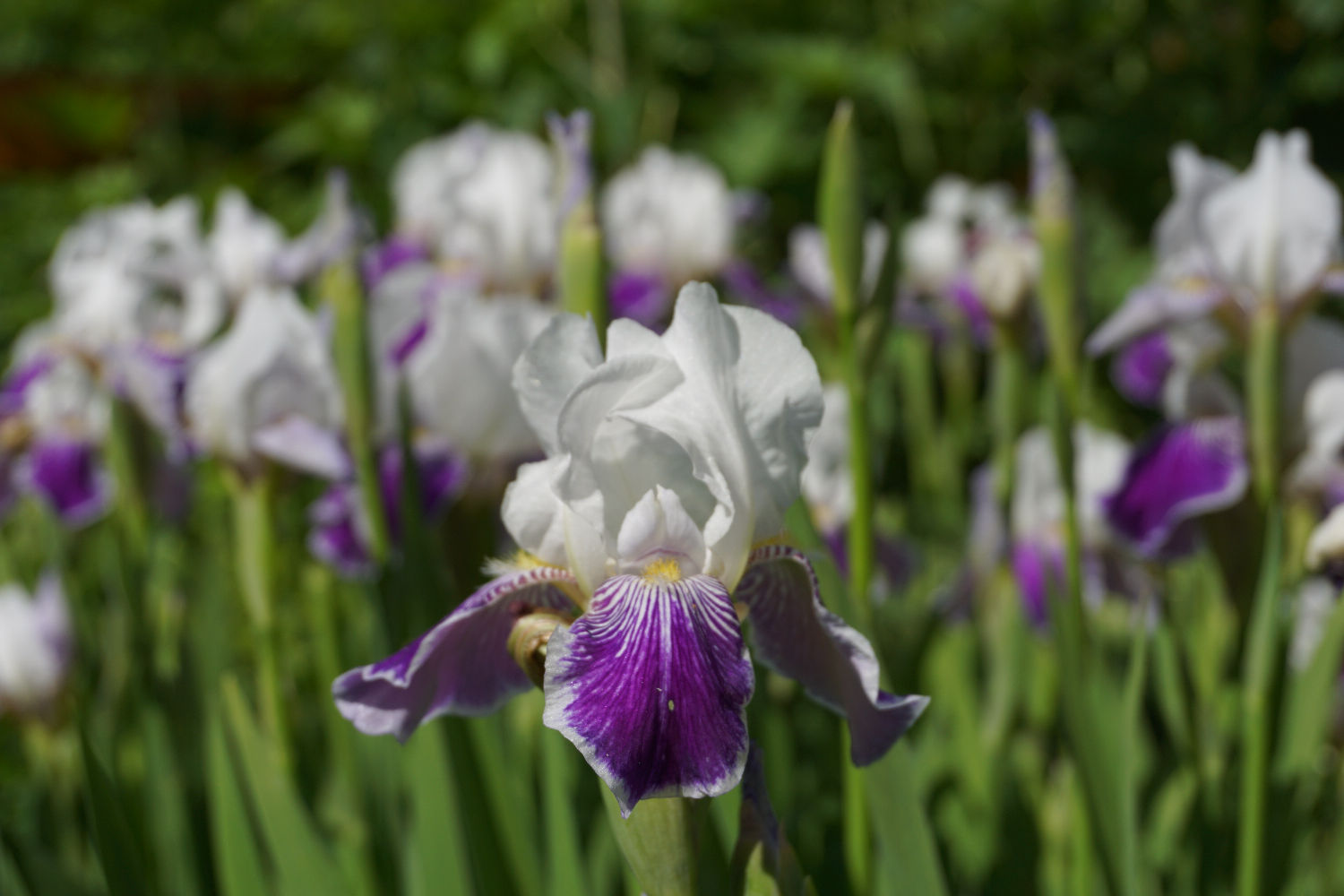
This photo was taken on June 24, 2019 by Jessica Howe.
While blooming in June, the spent buds can be snapped off easily. In August in Calgary, irises should be divided when the mounds become too root bound, usually after about three years. I like to cut the leaves back to c. 6″ in the fall or spring. Irises can be planted in and among sticky geranium.








